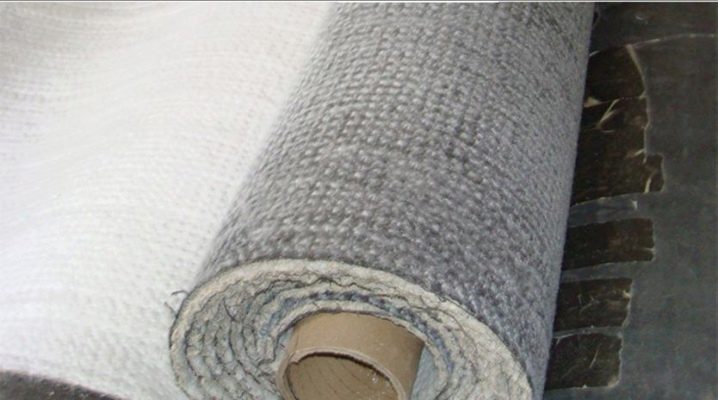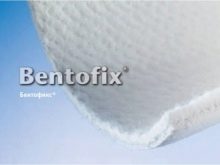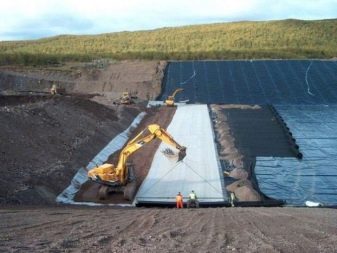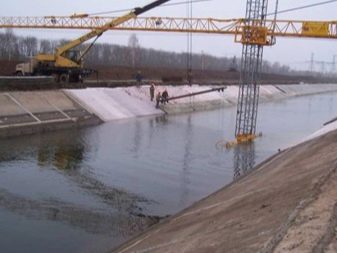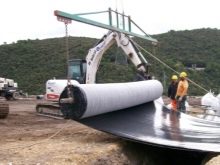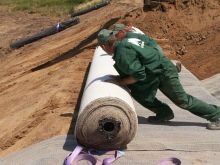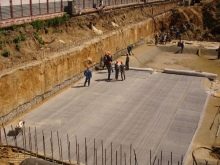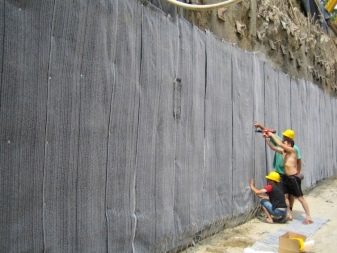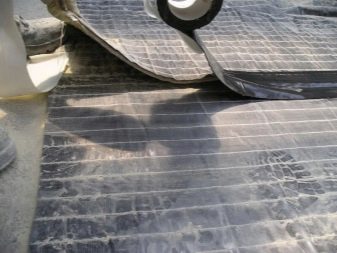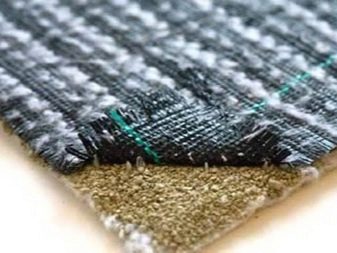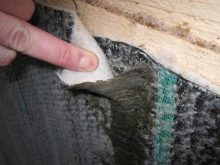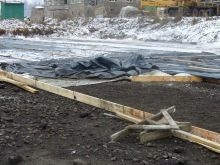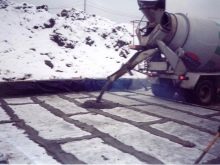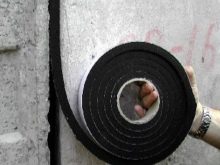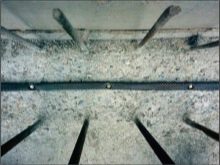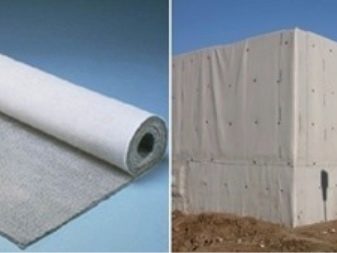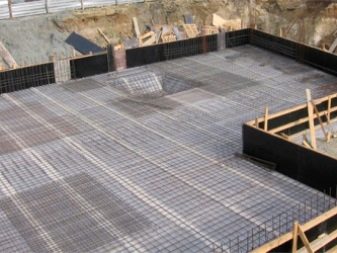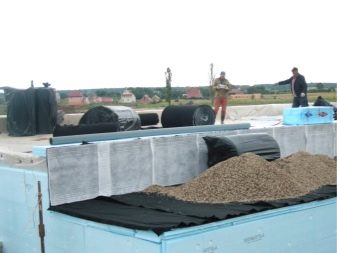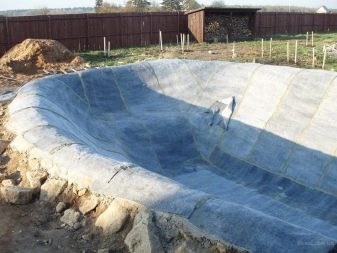Bentonite mats for waterproofing: description and specifications
Bentonite plates are widely used in construction, for example, when waterproofing. The material has been in use for quite a long time, because its main component is clay. One of the famous and already outdated varieties of material found under the name "clay castle". It is a tamped raw material, which was 30–40 cm thick, re-molded into a slab. So there were bentonite mats, which will be discussed further.
Special features
Such waterproofing materials are often called bentonite mats because of their visual similarity with this natural material.From a technical point of view, this technology has significantly extended the service life of that part of the structure, which is below zero. In the old days, this very “clay castle” protected the premises and structures not only from external moisture, such as ground waters and rains with additional moisture, but also as protection of the external environment from internal exposure.
This raw material found wide application in the industrial era, when the problems associated with leaks of various liquids became much more extensive. Modern technologies have somewhat modernized this material, giving it the opportunity to increase and increase the properties of the “clay castle”, making it simple to lay. Quality products are produced by the brands Voltex and Bentofix NSP 4900. The instructions for their use are quite wide.
Properties
Concretes are rocks of clay (highly dispersed), in which the content of montmorillonite is over 60%, and the density ranges from 2 to 3 g / cm3. The bentonite plate is laid in a dry state, and when it gets wet it swells up, completely blocking the access to water. But here the vapor barrier does not suffer at all and is well preserved.When wet, these plates increase their volume in direct proportion to the amount of moisture, but usually this value ranges from 12 to 15%. It is filled with water after the backfill of the foundation, since for the full bursting the plates need both moisture and a closed space without contact with oxygen.
Concretes are very non-toxic, because the least harmful to the environment. Among waterproofing materials in this regard, only cement slabs can compare with them, but their waterproofing properties are noticeably worse than those of bentonite ones.
One of the most important conditions for the best waterproofing - tight fit. The denser the bentonite plate is adjacent to the concrete, the better the waterproofing will be.
As an example, we can cite the domestic bentonite mats of the manufacturer Vodopor. This product is a rolled geotextile, consists of a layer of synthetic fabric on both sides, between which there is a layer of bentonite clay (in granules). Fasten layers on the principle of needling.
The use of bentonite mats:
- Construction of reservoirs.
- Waterproofing of tunnels, foundations, ceilings of underground structures - basements, bunkers.
- To protect both groundwater and from them.
- Waterproofing of water bodies (canals, dams, water storage, water tanks).
- Waterproofing of special liquids (oil storages, industrial waste).
Among the advantages of bentonite mats, you can emphasize the absence of defects or other problems associated with temperature extremes, environmental safety. If the mat has received mechanical damage, then it does not lose its properties. If the concrete structure to which it is attached received mechanical damage, the bentonite mat also does not lose its properties and continues to waterproof the area well. The product is very durable and unlimited in the cycle of the arrival and decrease of moisture.
Just like many modern technological materials, bentonite mats do not require any specific tools or special equipment for laying, and are also very quick in laying. The weather does not affect the laying speed or the quality of the material itself. They retain their elasticity up to -35 degrees Celsius.
It is worth noting the stability of bentonite raw materials for special solutions, petroleum products or chemicals.For more information on what substances can withstand this waterproofing material, it is better to ask the manufacturer to find the perfect option. But bentonite mats withstand the threats of the external environment, while not losing their properties.
But some salts and sulphates have a very negative effect on it, so for the greater preservation of waterproofing it is worthwhile to regularly conduct a chemical analysis, on the basis of which it is easiest to find out the threat to this raw material. This also applies to conventional cement mortars.
Installation of waterproofing materials, in particular, bentonite mats, is very simple. For their installation requires as much as possible cleaned surface of concrete from dirt and debris, as well as chips of the concrete itself. It is desirable that during installation the workers themselves should not be disturbed on the site. As a rule, such work is carried out by a brigade of five people with a separate leader who controls the process of executing work from the outside.
The main front of the work of this team is reduced to the preparation of the concrete base, as well as the walls, because it is necessary to do a certain overlap in order to improve the properties of the waterproofing material.For structures, completely hidden under the ground, waterproofing is carried out on all sides in order to avoid leakage and destruction of the structure itself.
But you should not achieve absolute purity of concrete, and this is a very difficult task, it is enough just to clean the concrete from debris, leaving small stones no more than 3 cm in diameter.
When the surface is prepared, the mats are laid out on the leveling screed. At the same time for the best waterproofing procedure is carried out overlapped, but not fixed. The seams of bentonite plates are treated with bentonite granules, but such moments are often sprinkled with granules.
On the same vertical surface, these mats are attached to the wall with special metal dowels overlap. After that, the bentonite granules are mixed up to the consistency of sour cream and they process the coating seams. In the case of this type of waterproofing, it is necessary to fill it with concrete or do their filling. It is also impossible to mount bentonite products in water, they begin to swell too.
Installation errors
Perhaps the main problem with waterproofing works, especially in Russia, is the fact that the customer often expects a much greater effect and quality from waterproofing than the one that can be done.The most common causes of poor quality work on any waterproofing are incorrectly chosen materials: the cheapest and incompatible with each other.
One of the reasons may be poor-quality sealing of seams. But still, the main reason is incorrect timing, which often goes along the lowest temporary border, but it also happens that the customer decides, despite SnIPs, to shorten the terms at will, which is a violation of technology. Sometimes it is difficult to explain that any materials or other raw materials must be kept for a certain period of time.
In addition to the customer, often the design department incorrectly calculates many factors, such as the swelling of the bentonite mixture itself: they do not leave cavities for the expansion of the material, and this leads to its deformation and loss of its properties. Sometimes it happens that the cavity is too large and this also causes a defect, since the free cavities where the bentonite material does not penetrate even after swelling remain without waterproofing and this leads to certain consequences. It is important that when waterproofing with bentonite plates, it is not necessary to wait 28 days for concrete to settle, but 10-12 days should be spent on this matter. Unfortunately, there are not rare cases when neither designers nor customers take this moment into account.
There are certain common mistakes in the design and production of works. Sometimes there is not enough information about the level of groundwater, their raising and decreasing, and this is an important fact, since the height of the waterproofing is calculated based on this value. Another common mistake is special leveling mortars or concrete screeds that filter water. Some contractors are sincerely convinced that this screed and bentonite plates will work as one, but the mistake is that the waterproofing and screed have a completely different purpose.
The finished slab of waterproofing has insufficient reinforcement and an overlap on the wall, and therefore the strength is lost and the technology is violated, which leads to poor waterproofing. Another common mistake backfilling of the excavation, when the filtration coefficients of soils are incorrectly calculated.
The bentonite mat is a universal waterproofing agent with a mineral base. Due to its properties, provided high-quality installation, is an excellent material for waterproofing, protecting the building not only from moisture but also from gases.
It is very wear-resistant, and also perfectly seals the structure, and the design of the bentonite mat itself protects the core of the raw materials from mechanical impacts. There are bentonite cords. They serve to interface concrete structures, and waterproofing and its principles are almost as good as bentonite mats.
Membrane
In some industries, bentonite mats need to be protected from swelling. This method is called installing a waterproofing membrane made of bentonite mats. This is a very cheap, but very effective way that allows you to reduce the risk of errors almost to nothing, for example, when sealing seams. From the point of view of the financial part, this method reduces the costs associated with the installation of the material, its installation.
The application of this method is widespread in construction and waterproofing, which are directly related to water, toxins or other liquids.
Spheres of application
There are the following:
- The main industry in which this method is applied is oil producing. Here the membrane principle is applied in the construction and waterproofing of tanks - storage, sludge tanks,for the device of material platforms, and also for highways.
- When building landfills, associated with the disposal of waste, including nuclear, chemical. It is used in the construction of landfills, chemical settlers, nuclear settlers, and in civil society - in the construction of a manure depository and burial grounds for cattle.
- Mining industry uses this method most often in the energy sector. It is also used in the waterproofing of slag dumps of sludge collectors, evaporators.
- The consequences of man-made disasters for example, with the release of toxic waste can also be reduced using this method.
- Of course, it applies during the construction of hydraulic structures. Construction and waterproofing of reservoirs - artificial, fire, irrigation, with waterproofing and in the construction of reservoirs, pools. It is used in the creation of coastal fortifications.
- In industrial and civil construction. It is used for waterproofing basements, foundations, underground structures (underground garage, parking, vegetable stores, underground pedestrian crossings), tunnels,as well as waterproofing of reinforced concrete structures under the ground.
- Transport construction and adjacent areas. It is used in the construction of roads (unstable and weak soils), protection of embankments from weather conditions, protection of soil and water bodies from the ingress of special reagents in them, during construction and waterproofing of railway tracks and tunnels, as well as in areas with unstable water levels in rivers.
About waterproofing the foundation with bentonite mats, see the following video.
